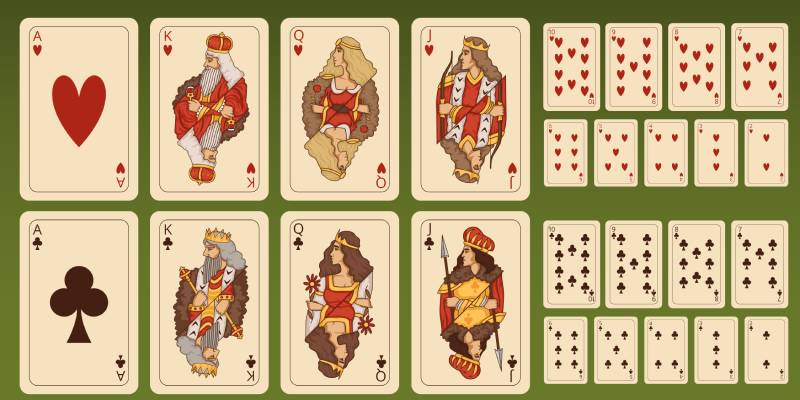The Evolution of Modern-Day Playing Cards
Since the Asians invented casino games in Asia and the Middle East, they migrated to Europe and then the United States before being transformed into the games we play today. However, some aspects of these games have remained unchanged for centuries.

One of these is the humble playing card, which is still used in games ranging from Blackjack to Baccarat.
Such longevity does not happen by accident; playing cards have taken hundreds of years to become essential for any land-based or online casino.
We detail the evolution of playing cards through the ages, from the ancient Chinese Tang Dynasty to the digital cards of today. Who knows where this card odyssey will take us next?
Tang Dynasty (868 AD)
Because the Chinese invented paper first, it stands to reason that they also invented playing cards. The revered ancient scribe Su E first mentioned cards in a gaming context in his writings, when he described a princess playing a “leaf game.” These cards, decorated with Chinese characters and royals, were longer than modern western cards.
Arabia, Persia, and Egypt (the 1100s–1300s)
It was only a matter of time before the card games became popular in the region, with trade routes running from China to the Middle East. It is thought that a card game called Mamluk inspired later European versions. These cards were ornately decorated and looked like works of art.
European Arrival (1377)
The first confirmed mention of playing cards brought to Europe comes from Florence, Italy, and this was stated in official parchments drafted by legislators who attempted to ban the use of such cards in the city.
Spain and Italy (the Late 1300s)
Spain and Italy were the first countries on the continent to design their playing cards because they were the gateways to Europe from the Arab world. Today, you can still find their suits and court designs in packs used in Spain and Italy.
Germany (1400s)
Germany was the first country to accept professional card makers who had learned their craft in Italy. Cities such as Augsburg and Nürnberg put a special emphasis on the craft. It was there that modern card designs emerged, distinguishing themselves from their Chinese and Arab forefathers.
France (1500s)
The exact suits and royals still used today are credited to French card designers. The French designers also divided the four suits by color, with two being red and two being black.
Western Influence (the 1900s–2000s)
Westerners developed card decks to withstand high amounts of play and adhere to increased security standards as more official casinos opened their doors across Europe and the United States. Cards were coated in plastic, and casinos inserted RFID chips into cards so they could track them. Cards were also outfitted with branded graphics.
Worldwide (Modern Day)
Card players have now become a fixture at online casinos, but the cards used have remained unchanged. Because their suits and colours have become so ingrained in games, these digital versions have retained their traditional designs. The back design is completely customizable, and the cards never show signs of wear or tear.
100% up to €500 or 5 BTC




